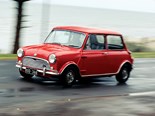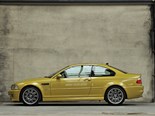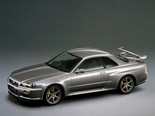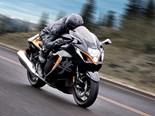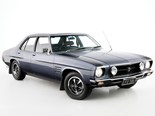Chinese VN Commodore - our strangest export
 Chinese VN - our strangest export
Chinese VN - our strangest export

 Chinese VN - our strangest export
Chinese VN - our strangest export

 Chinese VN - our strangest export
Chinese VN - our strangest export


|
|
Chinese VN - our strangest export
|

|
|
Chinese VN - our strangest export
|

|
|
Chinese VN - our strangest export
|
How Holden's VN Commodore spawned a weird and wonderful string of Chinese-built look-alikes
The VN Commodore wasn’t Holden’s best car, but it saved the company and remains fondly remembered for its size, power and ability to mang. What it’s not remembered for is being exported to China in boxes and before being knocked together in a nondescript factory in Beijing.
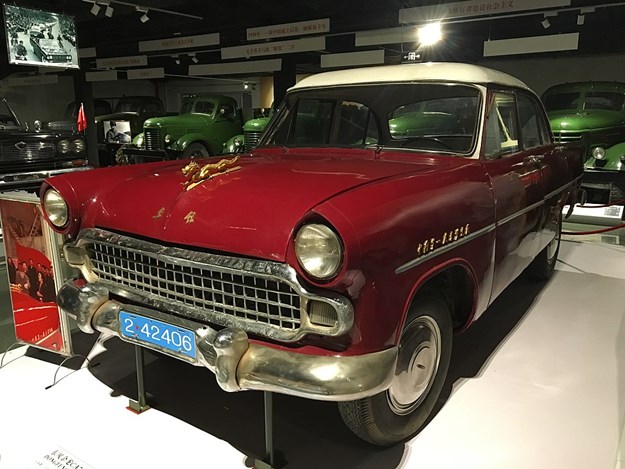
Dong Feng CA71 at the Beijing Classic Car Museum - Wikimedia pic
China’s first mass-produced passenger car came along in 1958; the Dongfeng CA71, based on Mercedes-Benz running gear with a Simca-style sedan body. By the mid-1980s, the nation was dotted with manufacturers of varying sizes and abilities, building everything from Soviet-sourced sedans to straight bootlegs of familiar Western designs. But as the sleeping giant was gradually mobilised by industrial machinery; trucks and plant equipment, passenger car production remained as low as 6000 units per annum.
With a need to stir the local economy and reduce the trade deficit caused by rising imports, crippling government tariffs were imminent. Foreseeing this, some Western manufacturers got on the front foot, notably Volkswagen and AMC, who both signed contracts during the early 1980s to produce vehicles in China for the next two decades. A prudent move: March 1985 saw the Chinese government place a whopping 260 per cent duty on imported vehicles and from September 1985, imports were banned altogether for a period of 24 months.
Plenty of small players rushed to fill the vacuum, but with little practical knowledge, skills or technology to build an actual vehicle, results varied greatly. It was into this void that Holden’s Program Manager for Imported Passenger Vehicles, Mr Neil Pogson was thrown headfirst, hitherto unaware it had even existed. "Although I dealt with imported Holdens, I also handled export at the time, along with all the odd queries we got here and there," Neil begins. "Conspiracy theory carburettors that ‘Big Oil are trying to suppress’; you know the type of thing," he adds with a sigh.
It was because of Neil’s eclectic side duties that, sometime in 1993, another peculiar enquiry landed on his desk, lodged by a Melbourne-based import/export agent. "They’re still in business today, so I won’t mention them by name," he says. "But they were acting on behalf of a Chinese company who were looking to buy stamped sheet metal sets in order to build their own car."
China’s massive import duty remained so into the 1990s, with local manufacturers continuing to take advantage of the economic isolation. Neil’s preliminary discussions with the agents, based in Broadmeadows, revealed an entity named CNAIEXC (China National Automotive Industry & Export Xiamen Corporation), a Chinese state body tasked with coordinating the purchase. Once the programme was well underway, Neil learned the cars would be built by Beijing Travel Vehicle Works.

Holden VN Commodore wagon
CNAIEXC proposed that Holden supply 500 sets of Commodore wagon outer sheet metal, forfeiting the driveline and, bizarrely, the floorpan. Holden also supplied contact details for suppliers of bumpers, grilles, glass and sundries. The plan required Holden to send the panels to Broadmeadows on returnable racks and the agents would take care of the rest.
"My job was to see if it was economically viable and practical," Neil says. "General Motors-Holden Australia was long out of the CKD (Completely-Knocked-Down) packing business, so it was decided that HSPO (Holden Spare Parts Operation) would be responsible." However, there were several issues to address before Holden would go there in any capacity.
"We said that we’d accept no liability for rust, shipping damage or oiling the panels for export," says Neil. "We’d offer no technical support outside of panel-related data. And payment was to be in Australian dollars so there’d be no foreign exchange impact." GMHA were also at pains to specify that no Chinese-destined parts could be sold back to Australia, nor could any cars that contained said parts. Furthermore, Holden would only offer parts then-currently in production for HSPO, clearly wishing not to go too far out of their way for what was, for the time at least, a very strange venture.
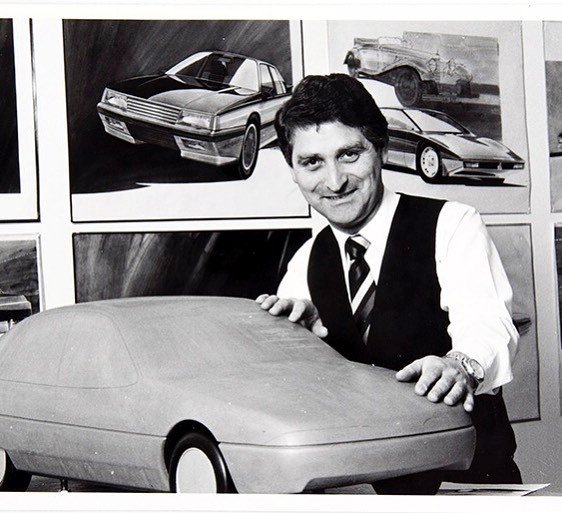
Phil ZMood circa 1988 with a Commodore clay model (GMH PR)
Aside from gaining the approval of GM Asia Pacific and GM Hong Kong, Neil also had to address the issue of ‘Commodore-looking’ cars appearing in China. Despite stipulating that no GM or Holden branding could be used on the car, any average Aussies passing through China would recognise the unmistakable shape of the Phil Zmood-designed Commodore wagon. "There were some initial concerns, but we got around it by saying, ‘So what? It's in China and nobody in Australia will ever see it.’" laughs Neil, having not predicted China’s tourism boom nor the advent of the internet.
"We also had some resistance from Elizabeth," he continues, "as the spares plant could not keep up with normal orders let alone take on new ones." To placate HSPO, approval was given for the plant to add an overtime Saturday shift for production of the China-destined parts. "Even with that extra expense, it still looked to be profitable," Neil adds. "So, we did it."
In April 1993 a pilot batch of 50 panel sets were shipped to the export agents in Broadmeadows, with Don Wylie, Holden’s Chief Engineer, invited to follow the parts to China. After viewing the construction of the first batch of Beijing Travel Vehicle Works BJ6490s, Don reported that, "…the factory was brand-new and very large, but hadn’t much product to make until the VN stuff arrived."
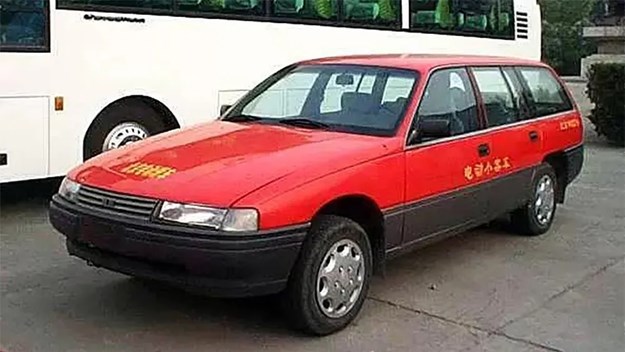
BJ6490 in the flesh
Outwardly, the production BJ6490 looked in every way like a Commodore wagon, but inside was a different affair. With the VN’s dashboard designed by Holden exclusively for right-hand-drive, and the LHD Opel Senator dashboard being too narrow to fit, the Chinese had to be resourceful. Folded steel did the job, but the tractor-style dash was at odds with the VN’s then-modern and aerodynamic shape, something not lost on Beijing Travel Vehicle Works or the fledgling consumers of China.
.jpg)
BJ121 postcard – chinacarhistory.com
The agricultural dashboard had something in common with the underpinnings, as the BJ6490 didn’t run a monocoque chassis like every other Holden wagon ever. Instead, the body was attached to the BJ121 ladder chassis made by Beijing Auto Works. Most commonly found under the BJ121 pickup truck, it was repurposed by multiple manufacturers for different applications, even finding itself under a Nissan Cedric-based sedan and a Toyota Crown-based wagon.
Given the automotive zaniness that is a Chinese-manufactured VN Commodore built literally from spare parts and sitting on a truck chassis, you’ll be happy the learn the BJ6490’s engine does nothing to change that. Neil never received official word on what powered the BJ6490 but learned anecdotally that they ran a copy of the 2.2 litre 4Y engine, produced in China as the 491Q. This seems reasonable, but French-based Chinese car historian Erik van Ingen Schenau believes the BJ6490 actually ran Mopar power.
The original Chrysler 2.2 appeared in a bunch of 1980s K-platform cars we never saw in Australia, such as the Chrysler LeBaron, Dodge Daytona and Plymouth Voyager. By 1995, the Western world was done with it and First Auto Works of China had purchased both the tooling and licencing rights. Produced as the 2213cc CA488 and spun around 90 degrees for rear-wheel-drive applications, the engines not only powered the Holden-based BJ6490 but could be found under the bonnets of Chinese-built Audis, Nissans and even Chevrolets.
Regardless of powerplant, the mis-matched machine met some success, as the remaining panel sets were shipped to Broadmeadows between June and September at a rate of around 150 per month. Meanwhile, grander plans broiled in the background, with CNAIEXC requesting via their Broadmeadows agents that Holden investigate reintroducing full CKD export kits. With an aim for 2500 in 1995 and rising to 8000 in 1996, most mechanical components were to be included, such as a HEC (Holden Engine Company) Family II motor and RWD Opel gearbox to suit.
Given the profitability of the deal so far, GMHA was happy to entertain the prospect. Neil continues, "HEC took care of their own negotiations for supply of 2.0L Family II engines, which were required to be exported semi-knocked down to comply with local Chinese laws." By November 1993, the powertrain configuration had been finalised with 16 sample engines sent immediately, followed by another 44 slated for mid-December.
Amazingly, Holden was even able to offer a solution to the BJ6490’s gronky dash via ambulance manufacturer JAKAB Industries. The Tamworth-based company had partnered with Holden to build ambo bodies for fitment to extended-wheelbase VG-VS utes. With customers across Asia expressing interest in the vehicles, JAKAB developed their own VN Commodore dashboards to suit left-hand-drive and were willing to supply the volume CNAIEXC required, leading to GMHA producing a single ‘picture car’ at Fishermans Bend; a finished, left-hand-drive 2.0 litre Commodore wagon.
Although not specifically engineered to Chinese specifications, the local agents were given full access to the picture car, which was to remain in Australia until the programme’s next level was ratified. However, a high-level review late in 1994 raised a series of major stumbling blocks. Firstly, GMHA had no capacity for CKD packaging, nor did HSPO have a facility to co-ordinate the receipt, checking, storage and packing of the volumes required, meaning several outside suppliers would have to be engaged at considerable expense. Furthermore, Spares had no extra capacity, and more Saturday shifts wouldn’t solve everything long-term.
The issue of product liability was raised again, but CNAIEXC agreed to give Holden a full waiver on that. Although everything had thus far been above board, the agents specifically requested that the full CKD shipments be labelled as ‘parts’, to ensure the then-230 per cent duty placed on built-up imports was avoided. "From GMHA point of view this was no problem, as to be a proper CKD shipment, Holden would have to be the source for technical support, tooling and methods advice, and be responsible for the product design and engineering; all of which were specifically ruled out by the terms of the contract," Neil says.
Neil details another concern, "It was recognised that there was a fair chance that the metal might be copied when we pulled out," he says before adding, "But again we thought, ‘So what? It’s in China.’" The biggest and perhaps most insurmountable hurdle was the reputation of the Chinese government themselves, which could alter regulations at any time, involuntarily rendering the project dead in the water. GMHA safeguarded their investment by declining to spend any more money than the revenue accrued to that time and, despite on-paper profitability, politely withdrew from the project in October 1994.
Neil Pogson went on to other projects, perhaps most notably co-ordinating the creation of the export-spec VR Calais for the Singapore market. Fitted with a Caprice-style nose and 2.6 litre Opel straight six, they’re another unusual Holden story, but ultimately one for another day. It seems Neil’s got plenty more, "Oh, then there was the VP Commodore we fitted with a 2.3 litre turbo from Saab. It was astonishingly good to drive, but I digress." Fair enough, Neil; the story of the Beijing Travel Vehicle Works BJ6490, or ‘How Holden sent panels to frontier China for locals to hammer together over a ladder chassis’ is quite enough for today.
***

Electric dream
Aside from being able to spin up an inside rear like no other car, the VN Commodore could carry stuff and lots of it. This was a feature not lost on the Chinese, especially Mr Yuan Jia Zhen, an engineer at Beijing Second Auto Works, who repurposed a bunch of BJ6490s to showcase an electric drivetrain.
That’s right, not only could the VN Commodore drop single peggers, become a taxi, provide the cornerstone of a factory-backed tuner operation and compete in Group A touring car racing; in wagon form, it could carry a huge pile of golf-cart batteries. The BJ6490D was the result, with at least three converted for an electric vehicle expo held in Beijing in 1996.
Like many of the cars at the expo, the BJ6940D was powered by a motor from the Sichuan Electric Motor Factory, while the speed controller and acceleration systems were supplied by Curtis Instruments of New York. The 100km range and top speed of 92km/h wasn’t too shabby considering the VN Commodore wagon was far from a lightweight vehicle, even more so when bolted to a commercial-grade chassis and loaded with lead.
But the Aussie-Chinese Frankenstein wasn’t done yet, as this unusual hybrid also became exactly that; a hybrid, possibly China’s first. BYD Co Ltd (Build Your Dreams) was founded by Mr Wang Chuanfu in February 1995 and was swiftly on its way to becoming one of the world’s leading suppliers of rechargeable mobile phone batteries. Mr Wang was planning on diversifying into automobile manufacturing, and although it would take until 2003 before BYD Auto Co Ltd was founded, plans were afoot as early as 1997. With the intention to import an electric car to experiment on, Mr Wang was convinced by Mr Yuan to buy local. His purchase of an electric BJ6490D stands as the first public sale of an electric vehicle in China. And it was a VN Commodore!
By 1998, Mr Yuan and BYD had a small fleet of electric BJ6490D VN Commodores; possibly as many as three, all of which had been used to experiment with hybrid technology. Although engine specs aren’t known, it’s believed the BYD BJ6490D Hybrid could do 200km on a single charge before petrol power kicked in to both shift the car and recharge the batteries.
***
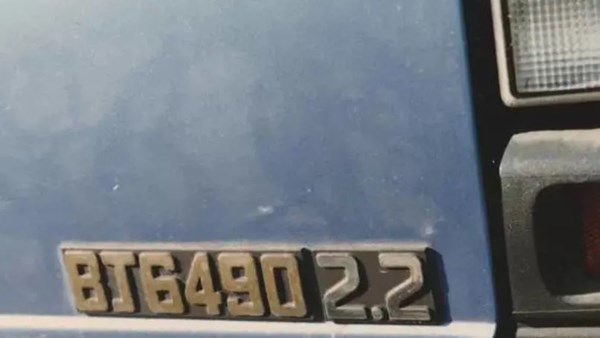
What's in a name?
The name BJ6490 isn’t exactly catchy; so how did it come about? For much of China’s modern industrial history, the government has set vehicle designations based on a series of conventions. In this case, the BJ6490 breaks down to:
BJ – Beijing Travel Vehicle Works
6 – bus (yes, bus. For tax reasons, of course)
49 – 4.9 metres long (about right; the VN is officially 4896mm long)
0 – free digit
***
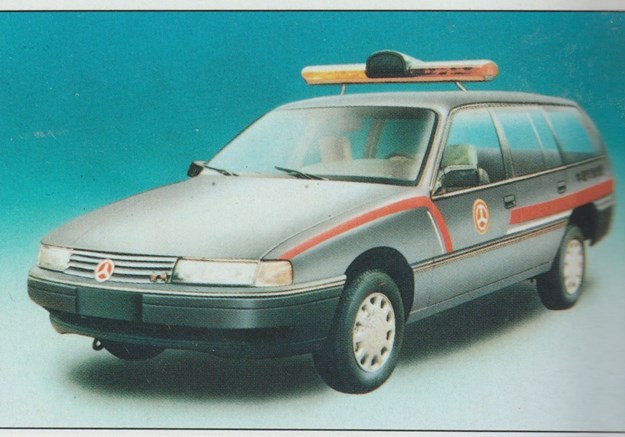
More VNs!
It turns out the BJ6490 wasn’t the only VN to hit China. You can add Chongqing Yuzhou General Auto Works YZ6490 ‘Light Passenger Car’ to the mysterious mix. Despite boasting a capacity of 10,000 vehicles per year, their main bread and butter appeared to be buses (proper ones) and trucks. We’re not sure where the parts were sourced from and research shows very few YZ6490s were made, although their range did include this ‘Road Administration Management Vehicle’.
***

Other Chinese Holdens
Ethnically speaking, Holden had been to China before, albeit to the UK protectorate of Hong Kong. The UK ruled China from 1841 to 1997, meaning quite a few Holdens escaped this colony for that one during the 156-year occupation of the now-Chinese city-state. Aside from presumably favourable, Commonwealth-friendly tax breaks, it helped a lot that they drove on the same side as us.
***
The numbers
|
|
Holden VN Commodore wagon |
Beijing Travel Vehicle Works BJ6490 |
|
Engine |
3.8 litre V6 |
CA488 Chrysler |
|
|
|
|
|
Torque Nm |
292 @ 3200 |
157 @ 2500 |
|
Gearbox |
4-speed auto 5-speed manual |
Unknown |
|
Top speed km/h |
198 (1988 V6 sedan) |
120 |
|
Length mm |
4896 |
4896 |
|
Width mm |
1794 |
1775 |
|
Height mm |
1422 |
1520 |
|
Wheelbase mm |
2822 |
2850 |
|
Ground clearance mm |
141 |
160 |
|
Weight kg |
1359 |
1375 |
|
Turning circle m |
10.3 (sedan) |
12 |
|
Number built |
215,180 including sedan and wagon |
500 or less. Or more. |
With thanks:
Neil Pogson – Holden Retirees Club
Sam Faulkner – ChinaCarHistory.com
Erik van Ingen Schenau – Chinesecars.net
Unique Cars magazine Value Guides
Sell your car for free right here
Get your monthly fix of news, reviews and stories on the greatest cars and minds in the automotive world.
Subscribe

.jpg)









